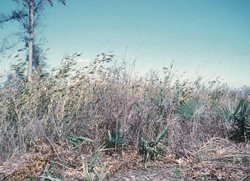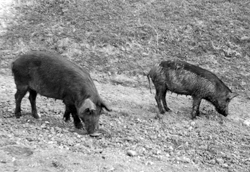Introduction to Delta Pieces: Northeast Louisiana Folklife

Map: Cultural Micro-Regions of the Delta, Northeast Louisiana

The Louisiana Delta: Land of Rivers








Ethnic Groups










Working in the Delta








Homemaking in the Delta



Worshiping in the Delta



Making Music in the Delta




Playing in the Delta







Telling Stories in the Delta



Delta Archival Materials
Bibliography


An Owl Calls
By Hiram Ford "Pete" Gregory, III
Editor's Note: In the early 1990s, Pete Gregory wrote these personal reflections about Northeast Louisiana's Delta and they are published with minimal editing. Also see his Musings on the Louisiana Delta from a Native Son.
In the middle of a treeless field, a burrowing owl sticks its head out of a length of steel drainage pipe and calls. It's a long way from the Southern Plains where it belongs. Once this was a great wetland forest, always a challenge to Europeans but protected by floods and the sheer size and inaccessibility of it. Virgin cypress timber survived even the sawmills of the 1930s and 1940s. Giant oaks and gum trees shaded the woods. Great canebrakes burned in the 1900s and cattle grazed them, but still they persisted. Palmetto defied the plow and became the refuge for herds of hogs that competed with the Whitetail Deer. It all balanced out.
American Indian people lived there for centuries, and colonial people clung to the higher land on the natural levees. Plantations developed there, stopped by flooding at the backswamps. For another few centuries the Indian people clung to these wetlands; then some moved to the uplands nearby, leaving the broad natural levees to the planters and their slaves. The swamps were too daunting to tackle. Lumbering brought camps and mills, but folks came, cut the trees, and moved on. The scars of that remained—a giant sawdust pile, wrecked machinery, great clearings in the deep woods. Then the swamps came back.
In the 1940s, the oil industry hit the swamplands. Miles of board roads and some seashell roads brought in the rigs from Oklahoma and Texas. They left their scars, too—tanks and pumps, the rotten, soggy roads, and pits filled with slush. Bayous of dead trees and weird colored ribbons of ooze laced those vicinities; but the oilmen left.
In a few high spots, little pockets of people persisted—fishermen, wetland cattlemen, people who could adjust to the hard times of flooding. Some owned small pieces of the land, others just squatted. They used the timber sparsely for small houses and boats, grazed stock on the open range in the canebrakes, and fished for a cash crop. The swamplands remained.
Then in some distant place, some boardroom far away, the price of soybeans went up. The corporate farmers who had stripped the Missouri Boot Heel land and leveled the Arkansas floodplains found a new, forested piece of alluvium and a price incentive. Wetlands legislation stalled in the government, the US Corps of Engineers looked the other way for lack of funding or incentive, and the swamps met mechanized farming. Lines of bulldozers pushed and piled, day and night, miles of timber. Bayous were dammed and huge draglines built levees.
The swamp went dry! The fishermen lost their fish; their children moved to town or went to work on the corporate farms. The cattlemen lost their range and the farmers shot their hogs. The wild game fled or died and only postage-stamp pieces of state or federal refuges remained. Then bean prices dropped! Fortunes gained became fortunes lost. The fields went fallow, the farms for sale, but the corporate farmers hung onto the vast fields. Rice replaced some beans; duck hunting on leases replaced the harvest. Birds had survived the deforestation and instinct drew them to the rice fields. Subsistence hunting was replaced by sports hunters.
It looked like the swamps might come back, but the timber was gone, the insects were gone, the grasses were eliminated, and new chemicals added to the petroleum waste. The people who struggled to stay died of cancer. In a few places, the great expanses of stripped lands are being reforested with hardwood. Now corn stretches in the fields, thick as canebrakes once were, and the price of ethanol keeps it growing. The people wait. Those prices set in faraway places they only hear about on their TVs or cell phones or see arrayed on their computers, will determine if their world comes back.
Meanwhile the burrowing owl, threatened in its new place, waits, too.





